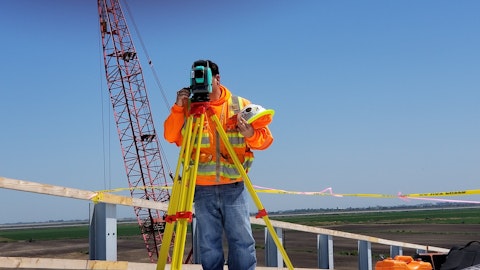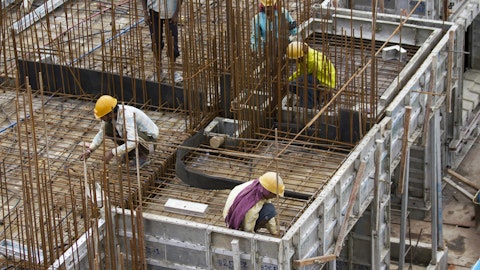Pavel Molchanov: Okay. And then, lastly, maybe back to what you said regarding the Inflation Reduction Act. So the tax credit eligibility of the product is pretty clear. Is the fact that bank lending may be impaired for all kinds of construction initiatives this year for obvious reasons, will that make it more difficult for prospective customers to monetize the tax credit that they would be eligible for, is that one of the headwinds that we are facing?
Dr. Rao Mulpuri: I don’t think so, Pavel. So, first of all, whether a project gets built or not is it’s above our take rate. So, let’s say, it’s a $300 million project, they have to go get X amount of equity and Y amount of debt. But once they have that, in any given market, there may be multiple buildings being built. There’s still an anxiety about not only whether the building gets rented, but at what rate does it get rented, and in that sense, the best building always gets either rented or rented at the best rates. So people are looking for ways to differentiate and as we might have talked about last time, what the tax credit does is it allows the owner to put this amenity in for essentially the same cost in some cases lower than they would have with traditional windows.
So to the extent they are going to build a building at all, we are well positioned from a tax credit point of view. The other thing we should have mentioned is, the product itself has evolved. We wouldn’t have been able to make this transition from office to multifamily, if not for the fact that we engineered our product over the last couple of years in terms of, as you know, residential has operable, right, sliding doors, swinging doors, bifolds. We have power transfers for that. We have the ability to run electronics in an apartment setting in terms of where the central controls are located versus the windows, and then finally, the consumer apps. So the product is ready, our ability to execute in that market is ready. We now have the owner relationships.
These tend to be large fleets, people with repeat buys that have tens of thousands of apartments across the country and they are all the leading developers are looking to build more sustainable spaces that are more experiential that a resident would want to be in. Yes, they save some money in energy, so it obviously helps at this moment, but importantly, it helps them differentiate their property. So for those reasons, as long as the project is being built, View is well positioned with the tax credit.
Pavel Molchanov: Okay. Actually, when you squeeze in one more. You had several recent announcements about the airport market, which by definition is publicly financed. So we are not nearly as economically sensitive as private sector construction. What role do you envision publicly financed projects, including airports playing in your revenue mix this year compared to previous years?
Dr. Rao Mulpuri: Yeah. Great question. So airports, for example, healthcare, we talked about, we have a number of projects in that sector as well. These are very resilient in downturns. I mean as airports tend to be public works projects, there’s FAA funding. There’s broadly infrastructure funding in the U.S. that came out of the stimulus that is still being spent. Every major airport, I am sure as you are traveling, you will see construction both in renovation of existing terminals and expansion. And it’s also great that not only they are expanding the two things that every airport director looks for are the two things we provide, which is a passenger experience and they are instructed by airlines telling them a better on-the-ground passenger experience leads to a better in the air experience for the airline.



